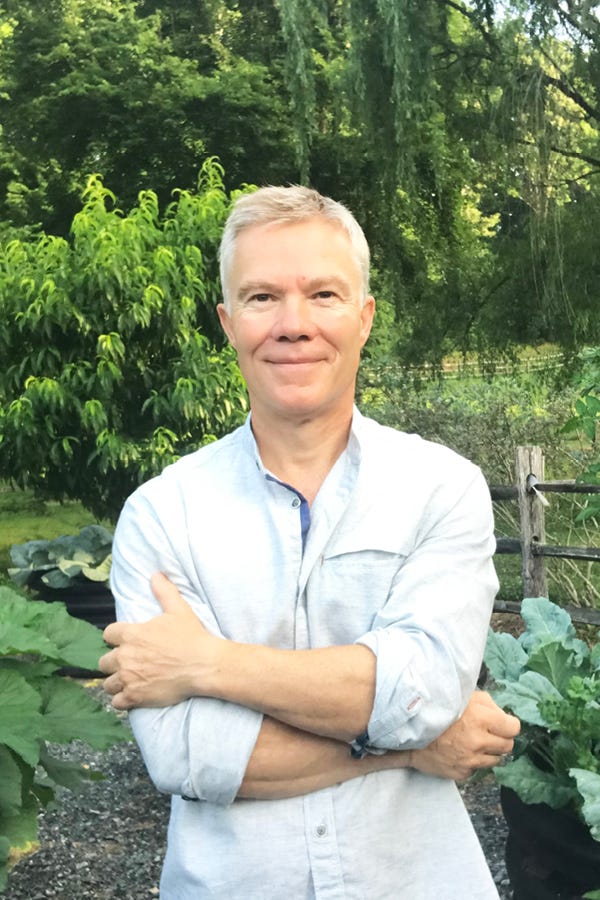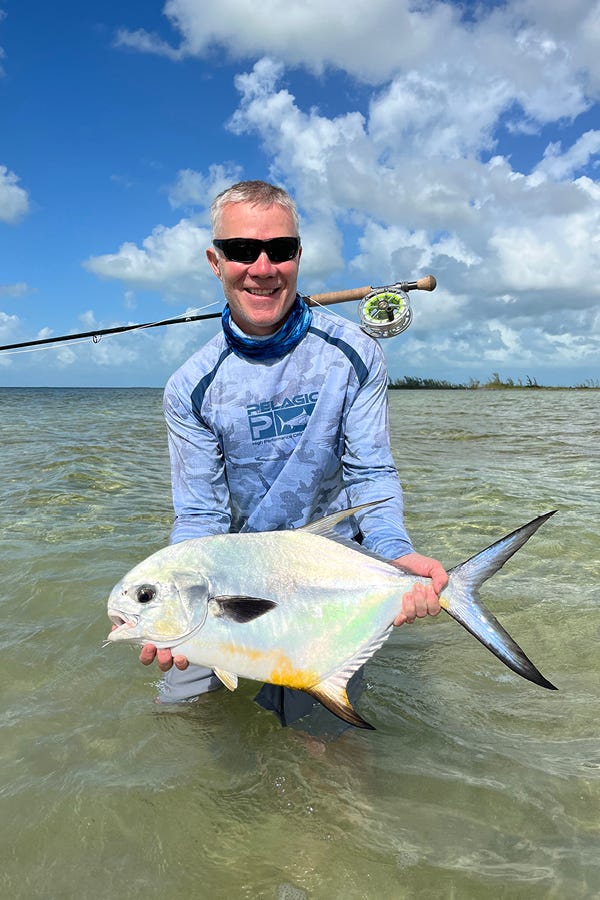The Wildflower That Could Save the Sea
How one man’s wild British childhood and love of the ocean led to a regenerative alternative to fish oil
By Andrew Hebard
On April 1, 2002, my wife, our two daughters, Grizwold—our barking mad German Shorthaired Pointer—and I ‘landed’ in North Carolina from the Southeast of England.
We chose North Carolina because of its diverse and unrivalled access to nature—from the Blue Ridge Mountains to the Outer Banks—and its rich, multicultural society embracing science, arts, history, and technology.
We weren’t on a magnificent wooden sailboat like the pilgrims before us, but on an aging US Airways Boeing 737. Yet it seemed a fitting place to put down roots and build a business that combines agriculture, health and wellness, and ocean abundance. It became the birthplace of Ahiflower®, and I’m honored to share part of the story.
Growing Up in the UK
Feral could best describe much of my childhood growing up in the UK. Bunking off school to go fishing or hunting, or just playing on farms and building camps in the woods; my maverick ways were a source of great stress to my parents—mostly my mum. “Could do better” was pretty much all teachers said in my annual school report.
Luckily for me, I was born with a profound connectivity to, and real eye for, nature. To this day, the draw of the outdoors is as instinctual and imperative as ever. My grandmother was a florist and taught me about the beauty and diversity of the plant kingdom, and my seemingly ancient, chuntering, and bald neighbor Arthur Smith became my teacher of all things about British nature. From identifying bird songs and spotting the marbled brown trout on a gravel stream bed that nobody else could see, to crafting walking sticks and catapults from the most perfect of hazel bushes, or using ferrets to catch rabbits and growing the best vegetables for my family, childhood was as simple as it was exciting.
Today, I guess, that might be called “preparing to be a prepper,” but my childhood life wasn’t the consequence of conspiracy theories or prophecies of doom. It was just wholesome fun—it’s what we did. We didn’t have money, but we ate really, really well—fresh, homegrown vegetables, locally picked and canned fruit, wild-caught fish and meat, all prepared with time, simplicity and love. It was soul food.
Seeds of Discovery
My college calling was always going to be agriculture or marine biology, but because the seas around the UK are mostly cold and dark, and because I’m not a great swimmer, I went farming—milking cows, lambing sheep, and growing crops. School never really agreed with me, and I’m pretty confident the feeling was entirely mutual, but I thrived in a college setting where we learned by doing, not by rote. Where creative, critical thinking was encouraged, and where I stumbled across the invaluable importance of learning to ask good questions—a life skill that can take you anywhere and allow you to hold a conversation with anyone, from blue collar to royalty.
After graduating and shimmying up the corporate pole as quickly as possible, I was stunned and suffered from imposter syndrome when I was appointed managing director of a small UK flower and vegetable planting seed company that was first established in the UK in 1793. For perspective, that’s the year when President George Washington laid the cornerstone of the capitol building in D.C., and, during the French Revolution, when the French thought King Louis XVI’s head and body would be better separated.
Needless to say, I was bristling with excitement at all the possibilities that lay ahead.
Joining a new company and being given a relatively blank sheet, my team set about some strategic planning and creative thinking, and we focused on the medicinal or industrial applications that some of the flower seeds had, zoning in on those that produced oils, most crucial oils with essential or unusual fatty acids. Our line up included plants like evening primrose and borage that are now common in just about every dietary supplement store globally for their skin and hormonal health benefits; and meadowfoam, which produces a luxuriant moisturizing oil found in many high-end skin care products.
And, it is where I met my second teacher—this time for all things biochemical: Keith Coupland, who amongst other things, was the co-inventor of Lorenzo’s Oil and was as keen on fishing as I was.
Gifted with a brain the size of a small planet, Keith has a creativity and intuition for combining science and nature, and it was his words to me nearly 30 years ago, “You better find a plant-based alternative to fish oil,” that really got me thinking. It also become a career-long quest (some might say folly), to leave a lasting legacy in what I believe can best be described as regeneration.
The Omega 3 Conundrum
Why a plant alternative to fish oil? Over the past four decades, fish oil, aka the omega-3 industry, has gone from virtually zero to over $5 billion annually, with large, industrial fishing fleets taking millions of tons of small oily fish (for example anchovies, sardines, menhaden, and, more recently, krill) from the oceans to keep pace with demand.






